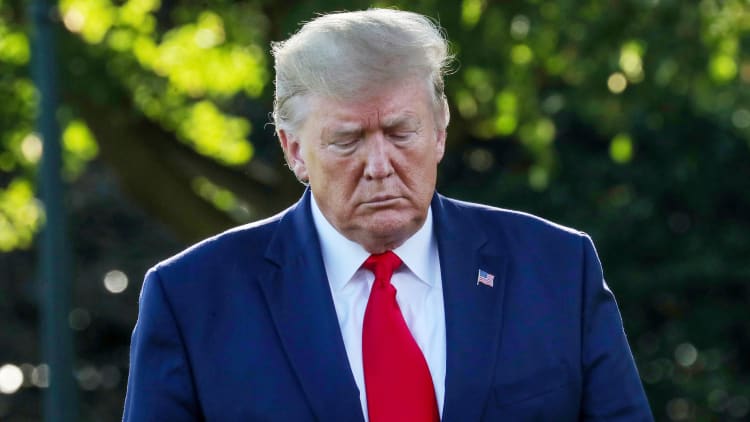
U.S. President Donald Trump has called the phase one trade deal with China "very substantial" — but analysts say it appears to be more of a "temporary truce" than a real deal.
They say it doesn't sufficiently touch on the thorny issues plaguing both sides, and warn that negotiations could break down again before the phase one agreement is drafted.
The trade dispute between the U.S. and China has gone on for more than a year and after their 13th round of talks last week, Trump said Friday that both sides have reached a phase one deal, and it will be written over the next three weeks.
The U.S. also agreed to suspend a tariff increase on at least $250 billion in Chinese goods to 30% from 25%, which would have taken place on Tuesday. Plans for another hike set to kick in on Dec. 15 remain in place.
"We think the 'substantial' first-stage trade deal made by Trump with China looks more like a truce than a genuine deal," said Christiaan Tuntono, senior economist for Asia Pacific at Allianz Global Investors.
Economists at Macquarie Capital echoed the same view and called it a "temporary truce."
So the 'substantial' is for the low hanging fruits — it's a bit lower than the low hanging fruits actually. And we haven't seen anything of real material yet.Vishnu Varathanhead of economics and strategy, Mizuho Bank
Mizuho Bank's Head of Economics and Strategy Vishnu Varathan told CNBC on Monday: "In terms of the real thorny issues, none of that is thrashed out."
"So the 'substantial' is for the low hanging fruits — it's a bit lower than the low hanging fruits actually. And we haven't seen anything of real material yet," he added.

As part of this partial deal, China will purchase between $40 billion and $50 billion worth of U.S. agricultural products. It will also address intellectual property and financial services concerns, Trump said.
However, Varathan pointed out, China "wants more agricultural goods ... anyway."
"It doesn't look like a huge stretch on either side, and I think China's harder stance, and hunkering down on its position hasn't really changed either," he continued.
'Sensitive areas' in trade war not addressed
The trade fight between the world's top two economies has spilled into other areas such as technology and even a so-called currency war. Both sides have not been able to resolve some of the thornier issues in their trade talks, such as intellectual property theft and technology transfer.
This partial agreement also doesn't address "many other more sensitive areas" such as cyber security, as well as Chinese tech giant Huawei and the future of the blacklisted Chinese companies, said Allianz's Tuntono.
While this first-stage deal is called a deal, it does not remove the existing tariff burden on US-China trade or reduce the uncertainty faced by businesses in future US-China relationship.Christiaan Tuntonosenior economist for Asia Pacific at Allianz Global Investors
Last week, the U.S. Department of Commerce added 28 new companies and agencies to its running "blacklist" of Chinese firms banned from doing business in the United States.
"While this first-stage deal is called a deal, it does not remove the existing tariff burden on US-China trade or reduce the uncertainty faced by businesses in future US-China relationship," he said.
Analysts say there's still a risk that going forward, the next phases of negotiations could abruptly break down — like they did earlier this year.
"First, drafting the agreement can be a tricky process. The sudden breakdown in the April/May negotiations is a good example of such a risk," wrote ANZ Research economists in a note, referring to trade talks earlier this year which were said to be close to a deal.
Those talks broke down because China reportedly did not want to commit to changes in its laws to help allay U.S. concerns about intellectual property theft, forced technology transfers and currency manipulation.
Tuntono said the finalization of this first-stage deal could still be disrupted when it's being drafted. "Further negotiation for the second-stage and other agreements can still be stalled with tariffs reinstated," he added.
Late September, reports emerged that the White House was mulling investment limits on China. If true, the potential battle could lead to a "high risk of financial decoupling" and cannot be ignored, according to the ANZ economists.
Deborah Elms, executive director of the Asian Trade Centre, added: "We've been down this path before so it's hard to say ... (but) it's better than no deal."
"But I don't think we should be calling this the beginning of a comprehensive solution to the problems that have plagued the U.S. and China," she told CNBC's "Squawk Box" on Monday.


